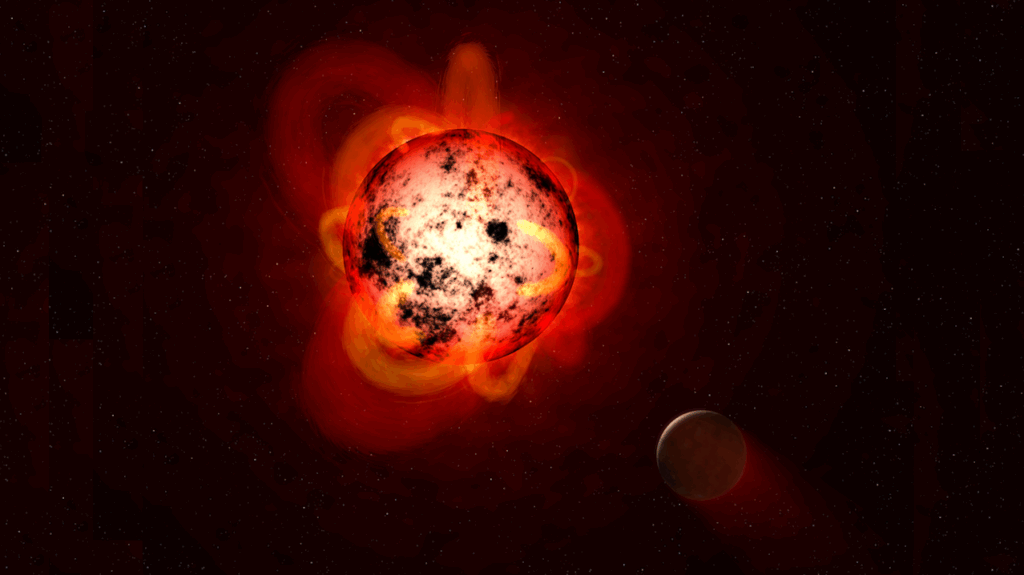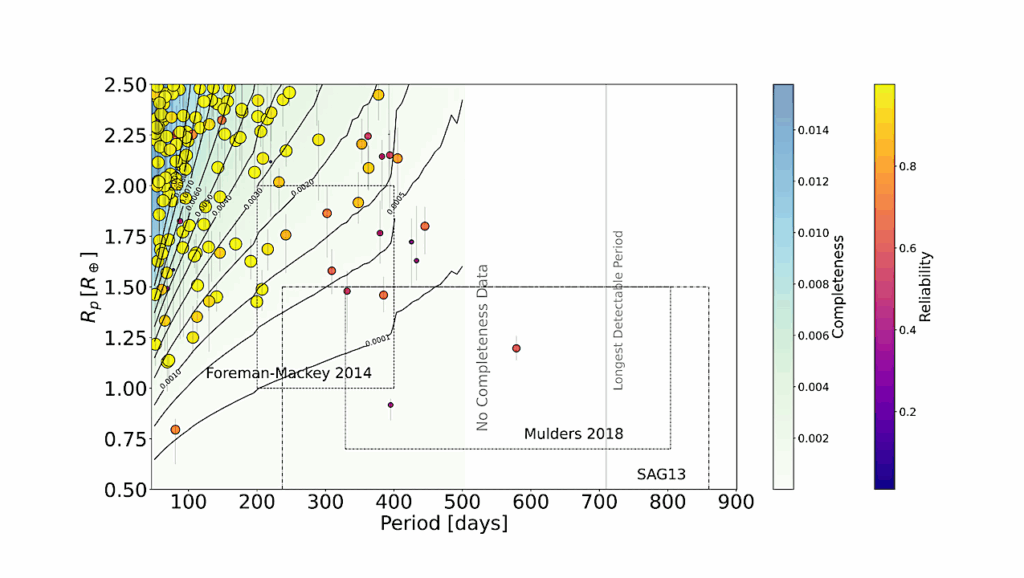Habitability and Spectroscopic Observability of Warm M-dwarf Exoplanets Evaluated with a 3D Chemistry-Climate Model

Planets residing in circumstellar habitable zones (CHZs) offer our best opportunities to test hypotheses of life’s potential pervasiveness and complexity.
Constraining the precise boundaries of habitability and its observational discriminants is critical to maximizing our chances at remote life detection with future instruments. Conventionally, calculations of the inner edge of the habitable zone (IHZ) have been performed using both 1D radiative-convective and 3D general circulation models. However, these models lack interactive three-dimensional chemistry and do not resolve the mesosphere and lower thermosphere (MLT) region of the upper atmosphere.
Here we employ a 3D high-top chemistry-climate model (CCM) to simulate the atmospheres of synchronously-rotating planets orbiting at the inner edge of habitable zones of K- and M-dwarf stars (between Teff= 2600 K and 4000 K). While our IHZ climate predictions are in good agreement with GCM studies, we find noteworthy departures in simulated ozone and HOx photochemistry. For instance, climates around inactive stars do not typically enter the classical moist greenhouse regime even with high (<10−3 mol mol−1) stratospheric water vapor mixing ratios, which suggests that planets around inactive M-stars may only experience minor water-loss over geologically significant timescales.
In addition, we find much thinner ozone layers on potentially habitable moist greenhouse atmospheres, as ozone experiences rapid destruction via reaction with hydrogen oxide radicals. Using our CCM results as inputs, our simulated transmission spectra show that both water vapor and ozone features could be detectable by instruments NIRSpec and MIRI LRS onboard the James Webb Space Telescope.
Howard Chen, Eric T. Wolf, Zhuchang Zhan, Daniel E. Horton
(Submitted on 23 Jul 2019 (v1), last revised 15 Oct 2019 (this version, v2))
Comments: 23 pages, 11 figures, and 2 tables. Resubmitted to ApJ after addressing referee’s comments
Subjects: Earth and Planetary Astrophysics (astro-ph.EP)
Cite as: arXiv:1907.10048 [astro-ph.EP] (or arXiv:1907.10048v2 [astro-ph.EP] for this version)
Submission history
From: Howard Chen
[v1] Tue, 23 Jul 2019 17:58:41 UTC (4,907 KB)
[v2] Tue, 15 Oct 2019 05:24:05 UTC (5,186 KB)
https://arxiv.org/abs/1907.10048
Astrobiology








